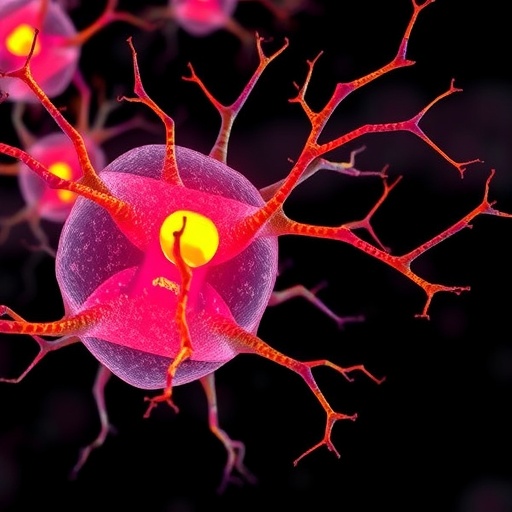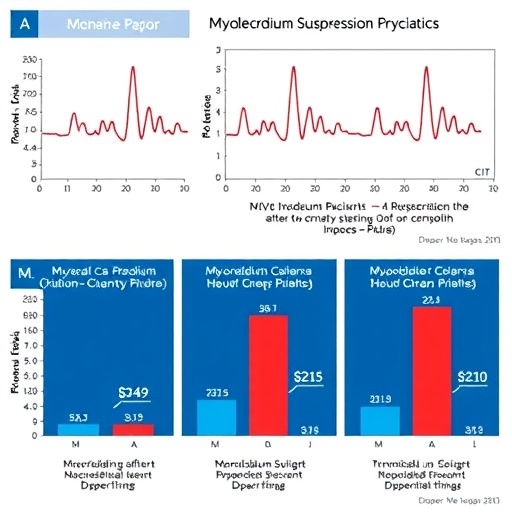In an era where metabolic diseases are rapidly becoming a pressing global health concern, researchers are unveiling the intricate biological mechanisms that underpin these conditions. A recent study by Ercin and Gezginci-Oktayoglu sheds light on the pivotal role of cellular plasticity in metabolic dysfunction-associated steatosis, a condition characterized by excessive fat buildup in liver cells. By exploring the molecular mechanisms involved, this research not only deepens our understanding of liver health but also highlights potential avenues for therapeutic interventions.
Metabolic dysfunction-associated steatosis, often a consequence of obesity, type 2 diabetes, and other metabolic syndromes, poses significant risks to individual health. The accumulation of fat in the liver can lead to more severe conditions such as non-alcoholic fatty liver disease (NAFLD) and liver cirrhosis. As the prevalence of these conditions increases, understanding the cellular and molecular underpinnings becomes paramount for developing effective treatments and interventions.
Cellular plasticity refers to the ability of cells to adapt and change in response to varying environmental stimuli. This adaptability can manifest in various ways, such as changes in gene expression, metabolic pathways, and cellular morphology. In the context of metabolic dysfunction-associated steatosis, cellular plasticity plays a crucial role in determining how liver cells respond to metabolic stresses, such as excess fat availability and inflammatory signals.
The research conducted by Ercin and Gezginci-Oktayoglu emphasizes that alterations in cellular plasticity could either mitigate or exacerbate the effects of metabolic dysfunction on liver health. For instance, if liver cells can effectively adapt to metabolic disturbances by regulating fat storage and metabolism, this may protect against steatosis. On the other hand, if cellular plasticity is disrupted, it could lead to an inability to manage excess fat, culminating in the progression of liver disease.
At the molecular level, several signaling pathways and factors contribute to cellular plasticity in liver cells. Among these, the role of transcription factors, such as PPARs (peroxisome proliferator-activated receptors) and SREBPs (sterol regulatory element-binding proteins), is vital. These factors help regulate lipid metabolism and the inflammatory response, and their dysregulation can contribute significantly to the pathogenesis of metabolic dysfunction-associated steatosis.
Additionally, epigenetic modifications are emerging as key players in cellular plasticity. These modifications, which can alter gene expression without changing the underlying DNA sequence, are influenced by various factors including dietary habits and environmental cues. The study emphasizes that understanding these epigenetic changes could provide insights into the reversible nature of metabolic dysfunction and highlight potential targets for therapeutic intervention.
The exploration of cellular plasticity also opens the door to potential regenerative medicine strategies. By harnessing the body’s inherent ability to adapt and repair, researchers could pave the way for innovative treatments aimed at reversing metabolic dysfunction and restoring liver health. This aspect of the research speaks to the promise of personalized medicine—tailoring treatments to individual patients based on their unique cellular response patterns.
Furthermore, the implications of this research extend beyond liver health. The mechanisms of cellular plasticity and metabolic adaptation are likely relevant to a spectrum of metabolic disorders, including obesity and type 2 diabetes. Understanding how different tissues respond to metabolic stress could help develop broader strategies for managing these ubiquitous conditions.
Innovative approaches to studying cellular plasticity are also being explored. Advanced imaging techniques, single-cell RNA sequencing, and other cutting-edge methodologies are enabling researchers to observe cellular behavior and adaptations in real time. These technologies not only enhance our understanding of cellular dynamics but also facilitate the identification of early biomarkers for metabolic dysfunction.
The findings of Ercin and Gezginci-Oktayoglu serve as a clarion call for further exploration of cellular plasticity’s role in metabolic health. As research continues to elucidate these complex interactions, it is becoming increasingly clear that a holistic approach—considering both genetic and environmental factors—will be essential for developing effective interventions in metabolic diseases.
In conclusion, the study of cellular plasticity within the context of metabolic dysfunction-associated steatosis marks a significant advancement in our quest to combat liver disease and associated metabolic disorders. As scientists unravel the intricate molecular mechanisms at play, they bring us one step closer to innovative therapies that could transform the lives of millions affected by these conditions. Future research will undoubtedly build upon these findings, exploring the full potential of cellular adaptability in promoting health and mitigating disease.
Subject of Research: The role of cellular plasticity in metabolic dysfunction-associated steatosis and related molecular mechanisms.
Article Title: Exploring the role of cellular plasticity in metabolic dysfunction-associated steatosis and related molecular mechanisms.
Article References: Ercin, M., Gezginci-Oktayoglu, S. Exploring the role of cellular plasticity in metabolic dysfunction-associated steatosis and related molecular mechanisms. J Transl Med 23, 1278 (2025). https://doi.org/10.1186/s12967-025-06922-4
Image Credits: AI Generated
DOI: https://doi.org/10.1186/s12967-025-06922-4
Keywords: Cellular plasticity, metabolic dysfunction, steatosis, liver health, transcription factors, epigenetics, obesity, type 2 diabetes, regenerative medicine.
Tags: cellular adaptability in liver cellscellular plasticity in metabolic diseasesglobal health concerns of metabolic diseasesliver fat accumulation mechanismsmetabolic dysfunction-associated steatosismetabolic syndrome and liver functionmolecular mechanisms of steatosisnon-alcoholic fatty liver disease insightsobesity and liver healththerapeutic interventions for liver diseasestype 2 diabetes and liver conditionsunderstanding liver health and disease





